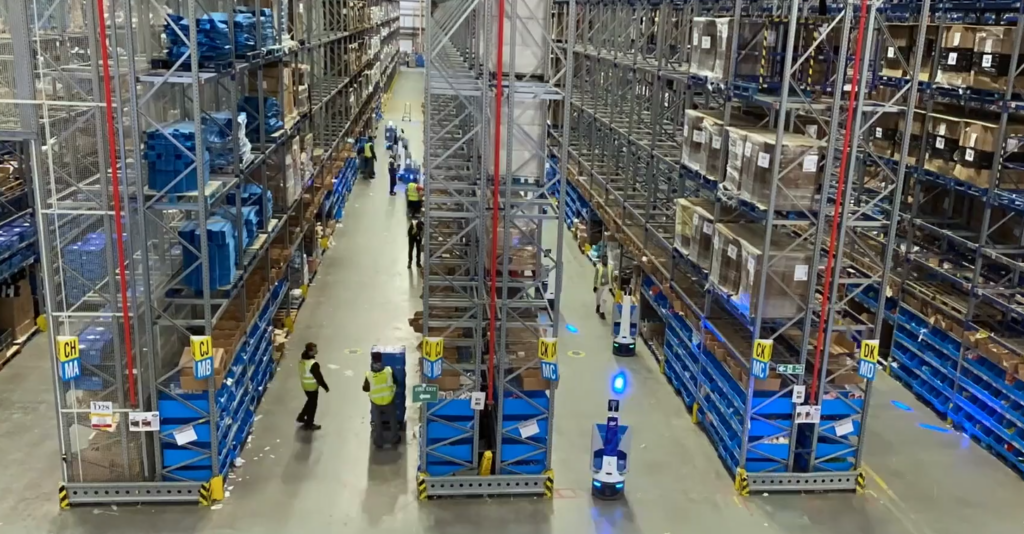Webinar Registration: The P2G Advantage
Webinar Registration: The P2G Advantage LEARN MORE

When you’re offered a new job, the people you’ll be working with, the salary, and what you’ll be doing are top factors in your decision to accept it or not. But there’s one more that you should consider—company culture. In fact, a whopping 86% of job seekers avoid companies that have a poor company culture. Learn the signs of a positive and a negative company culture and what People Operations departments can do to create a positive culture at work.
Why is a Positive Company Culture Important?
A positive company culture is important because culture defines the nature of the company and how you approach the solution to any company problems that arise. Your company culture at your warehouse or fulfillment center should be one that supports both your business growth and your employees. Also, a positive culture can, as seen above, impact your hiring, but it can also affect your product’s sales. Many consumers and other companies (depending on if your company is B2C or B2B) don’t want to purchase from a company with a reputation for having a negative company culture.
How to Define Your Company Culture
There are many elements that go into defining your company’s culture, including how you:
- Work together
- Approach problem solving
- Come to problem resolution
- Approach your clients, customers, and the market
Often, your culture is determined haphazardly. That’s not ideal because by the time you realize that you have a poor culture, it becomes a heavy lift to evolve it into one that supports the business, and you have to work through a lengthy change management process to do so. It’s extremely important to identify your company culture, and to do so early, as a healthy culture puts your company in a positive light.
It’s advantageous for a company to identify their culture early, understand what key factors are critical to preserve and promote, and build their values off of that culture. Starting with a mission statement can be helpful in this effort.
There are two common types of cultural exercises to identify your culture—one focused on preservation, and one on evolution.
The first is where you have had strong, positive values that have solidified through your journey as a startup, and you want to codify them to preserve them as growth takes off. This exercise is important, as the acceleration of hiring will tend to introduce dilution of those core values as you grow. Holding those values close and promoting them as you onboard new employees helps everyone maintain a common cultural currency that holds the company together naturally and will help to attract and retain talent.
The second opportunity is aspirational. Your management team realizes that your culture has some rough spots, and needs tuning. A cultural values exercise will help identify the issues and assist in establishing a culture that's going to help your team, and the business, perform at the right level to optimize your growth and objectives. This exercise also helps to address challenges that may have arisen in the past and continue to affect current teams. Representative challenges include teams that aren't working well together, pervasive siloing that is impeding communication and productivity, and interpersonal conflicts that are creating challenges.
5 Signs of a Negative Company Culture
- Resistance to change management
- Poor interpersonal dynamics and constant arguing
- Constant missed expectations
- Groups not communicating with another that should be
- Leadership unresponsive to poor behaviors
5 Signs of a Positive Company Culture
- Rewards and recognition programs that highlight company values
- Supports open communication
- Supports problem solving
- Supports people thinking the best of each other
- Management lives by the corporate values
How to Create a Positive Company Culture
Once you have identified the cultural behaviors that will take your company in the right direction, you arrange those into values that are agreed upon at the management level. Once that has been determined, it’s time to communicate those values to the company. That communication needs to be done through passing along knowledge, but also in leading by example.
It’s critical from a management standpoint that the management team leads through the cultural values by example. This way, employees see the team working by these values on a day-to-day basis, which reinforces those values. You can’t mandate from on high and then not do the thing that you’re saying everybody else should do. Instead, you have to exemplify it in your own behavior.
At Locus Robotics, we set our cultural values four years ago. Our values work very well for us, and we exemplify them on a day-to-day basis, and we reward people for that. Creating a rewards and recognition program that highlights our cultural values has been critical to our success and is very successful in other companies as well. In our case, we created a quarterly awards program to support our core values. For these awards, we identify and nominate several people during the quarter who have exemplified our core values and gone above and beyond in their work performance. We reward them with cash bonuses and a recognition poster which is posted in their local office and shared online. The recipients are publicized to the company during our quarterly all-hands meetings, and celebrated with the feedback that led to their recognition.
With our quarterly rewards program, employees see people being rewarded for different acts, aspects, and elements of our cultural values and see them applied in real life. When you see the things that are recognized by both the management team and the employee's peers, then you understand how that applies to you and that helps to encourage and promote those values and behaviors.
Be Intentional about Corporate Culture
Your culture will drive the success or failure of your business, and everything in between. The key is to be intentional, and to support your culture though leading by example. Buy-in from leadership and employees is critical, when you establish your values, as without that you will be constantly swimming upstream in operationalizing the values and mission statement that define your culture. I recommend creating a working group for your values exercise, which includes representation from management and employees in all major groups within the organization. This ensures that you are not commanding the culture the leadership team feels is required, but representing the values that help motivate everyone in the company.
When people leave a company, the top three reasons are poor management, lack of opportunity and poor company culture. With a strong, positive culture that your employees and leadership are fully invested in, your organization will increase engagement, reduce turnover and attract the top talent that will fuel you success and growth.
Is our corporate culture right for you? We’re recruiting!
About the Author
Tracy brings over 20 years of management, recruiting and human resources experience to Locus Robotics. Working with high-growth companies such as ABC Legal Services, Harman, Intronis, Barracuda Networks and iRobot, he specializes in building progressive, scalable recruiting and HR programs from the ground up. Tracy holds a Bachelor of Science degree in Business Administration, and a Master of Science degree in Human Resource Management.




